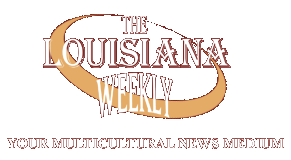Is the old destined to become the new, again? The push to raze the Claiborne overpass
23rd April 2012 · 0 Comments
By Christopher Tidmore
Contributing Writer
Preservationists in New Orleans have a dream. The I-10 Claiborne Ave raised Expressway will one day come down, and the historic neighborhoods of the Tremé and Faubourg St. John will be re-linked, as they once were, by a tree-lined boulevard.
Such a vision seemed impossible. The oak trees were gone, remembered only by murals on the interstate pillars. The Victorian properties along the road were doomed to deterioration, mansions made slums by the expressway rumble.
Then, age of the raised roadway became an ally. In the next two decades, the raised expressway will need to be replaced, or the aging structure will be in danger of collapse. Advocates like Jeffrey Tumlin argue that there has never been a better chance for New Orleans to do away with the raised I-10.
The San Francisco-based urban planning expert was instrumental in removing a key interstate thoroughfare that ended up restoring a historic neighborhood in his hometown. That experience on the West Coast could be duplicated on Claiborne Ave, in his opinion.
As he explained in an interview with The Louisiana Weekly, “Claiborne should be the busy, elegant boulevard it once was, a place to be seen, a place where New Orleans residents would want to open their new business, and a place worth walking a few blocks out of your way to enjoy. It should be crowded, but its majestic live oak trees should dominate the traffic on the street, making it pleasant to walk along.”
Removing the raised interstate would not only re-link Tremé to other Esplanade Ridge historic neighborhoods, but more fully integrate the uptown and downtown ends of Claiborne.
“The two halves of Claiborne Avenue currently seem like different worlds. Removing the Interstate will help make the whole of Claiborne seem more like the great connector it once was, linking uptown and downtown with each other, and linking neighborhoods across it. Claiborne should be one of the defining boulevards of New Orleans, much like Canal Street or St. Charles.”
Critics that say the removal of the overpass will affect not only traffic patterns, but also access to the French Quarter for tourism. They claim the economic impact on overall traffic flow would trump any neighborhood gains. When asked if the critics’ viewpoints are valid, Tumlin laughed, “New Orleans isn’t a great tourist destination because it’s easy to drive to. Houston is really easy to drive to. Visitors come to New Orleans because it’s unlike anywhere else, because it’s delightful to walk through, because there are so many interesting things to see and do, and because of its authentic and quirky neighborhoods.
“When the Embarcadero Freeway was torn down in San Francisco,” he continued, “Fisherman’s Wharf merchants also complained that they’d be over two miles from the freeway, that the proposed streetcar would eliminate their parking, and that they’d all be put out of business. Now, there are 15 times as many pedestrians as cars along Jefferson Street in Fisherman’s Wharf, and the streetcar is delivering more visitors than anyone ever imagined.”
Tumilin added that, “Removing the overpass expands New Orleans’ tourist base beyond the French Quarter and into its neighborhoods, improving the economy of the city overall. When San Francisco’s Central Freeway was first removed, no one imagined that Hayes Street, the forgotten neighborhood commercial street beneath the freeway, could become one of the most successful retail streets in the city. For a visitor economy, the real competition isn’t between different neighborhoods in a city, it’s between cities.
“The more interesting destinations there are in New Orleans, the better the whole city will do in attracting visitor spending. Removing the freeway adds Tremé to the visitor map of the city, providing better opportunities for visitors to experience the city’s unique African-American and Creole culture. Just as restaurants do better when they are surrounded by other successful restaurants, so will the French Quarter benefit if more visitors venture across Rampart Street.”
OTHER OBSTACLES
There is a plan for a high electricity line to run down Claiborne for the new University Medical Center, as part of the main transit-electrical line that runs along the entire Gulf Coast. Neighborhood groups say that this will destroy the efforts to remove the overpass. Tumline disagreed. “If I were from an East Coast city, I would be horrified that the UMC wants to relocate the South Prieur transmission lines to the edges of campus but I’m from the West, and we have these hideous lines all over our cities.”
“They are very expensive to put underground, so residents should be asking whether it’s worth $10 million to bury them, or whether that money be better spent on something else? Also, how can the visual impacts be mitigated? The lines are high, so the utility should allow a tree canopy beneath the wires, so that pedestrians on Claiborne don’t have to look at the poles and wires. In any case, while the lines are unfortunate, they don’t come close to outweighing the benefits of freeway removal.”
As for what changes would have to be made to I-610 to take up the added traffic, he noted, “A detailed traffic analysis needs to be completed to determine the various roadway changes that should be made to accommodate the overpass removal. The recent Smart Mobility study is a great start, and has a variety of suggestion for ramp reconfiguration and improved connections. Other cities, like San Francisco, have funded projects like these through tax increment financing, as well as proceeds on the sale of land freed up by freeway removal. There, typical properties near the freeway each increased in value by more than $100,000 with the removal of the freeway.”
The new Loyola Drive extension of the Streetcar currently is scheduled to end at the Train/Bus Station. However, some have proposed, long-term, extending the line down OC Haley, turning down MLK, and then turning on Claiborne Ave in an upriver direction, eventually reaching the Carrollton Ave. end of the St. Charles streetcar line. (Some have even suggested continuing the line down Jefferson Hwy. to Ochsner Hospital in Jefferson, most notably Jeff Parish Pres. John Young.) As to whether this is feasible, Tumlin observed, “When we look at streetcar investments in cities around the U.S., we see some interesting patterns. First, if streetcars are a component of a well-thought through economic development strategy, they can have a powerful catalytic effect, increasing property values and developer attention to the point where development becomes practical. Next, they can help shape development in ways that are more pedestrian-oriented and less car-oriented, if the city has the right requirements in place, and if it attracts the right developers. Finally, streetcars can attract people to ride transit who would otherwise never consider riding transit.”
“We also note some drawbacks. First, streetcars don’t create economic development in a just-add-water sort of way. There must be a market, and there must be an achievable plan. Second, streetcars are expensive, so there must be enough economic development potential to justify the added capital cost. Third, if the streetcars are overly successful, the city must have strategies in place to make sure that existing residents and business owners benefit from this success, and are not displaced. Fourth, streetcars make sense to the extent that the neighborhoods they serve are safe and pleasant to walk in at all times of day. Finally, streetcars are less flexible than buses, and have capacity constraints, so detailed analysis must be done to make sure they are the right technology for the corridor.”
“While Claiborne Avenue in the Tremé was severely damaged in the auto era, the Uptown portion of Claiborne wasn’t entirely spared. The road was widened at the expense of the sidewalks and landscape, and many of the businesses along the street have turned into parking-oriented strip commercial, like along any highway anywhere.”
“Building streetcar (sic) along this portion of Claiborne could be part of a strategy for reinventing the street as a more walkable, more urban neighborhood, as well as reinvesting in the Katrina-damaged blocks. Streetcars could also make it more attractive to develop some of the bleak blocks of parking lots near the train station, expanding the CBD’s jobs core, or making new downtown housing attractive.”
Still, in Tumlin’s view, the key to fighting all of this blight is the removal of the overpass. But, that alone will not insure a rebirth. It takes leadership from the city. “When we look at freeway removal projects elsewhere around the world — San Francisco, Milwaukee, Portland, Seoul, etc. – we see that the question is not whether removing the freeway will reduce blight and create the opportunity for a ‘Grand Avenue,’ but rather what the city should do when the result is more success than anyone hoped for?”
“Removing the freeway will result in a big increase in property value for a few blocks on either side of the freeway, enough to significantly change the attractiveness of the neighborhood for developers or people wanting to start businesses, and enough to have an impact on residential and commercial rents. In New Orleans, the impact may not be as big as it was on San Francisco’s diverse Hayes Valley neighborhood with the removal of the Central Freeway, but it will still be significant.”
“The city should make sure that it has tools in place to capture some of new value that is created by the freeway removal, and use that revenue to fund community benefits. It should make sure that it has housing programs and policies in place to minimize displacement of existing residents and businesses. It could use some of the land freed by freeway ramp removal to help create important local services like daycare, skills training programs, and neighborhood grant programs for arts and music. It can create tax mechanisms to cool development pressure in case the market gets too hot. It can ensure that the existing neighborhoods are involved in the planning process along the way.”
“Most importantly, the city can help restore trust in government by not over-promising on what it can deliver, by creating quantitative measures of success for all its promises, and by regularly reporting back to the public on the results. But in the same way it was unjust 60 years ago to cut a freeway through the heart of the Tremé, so is it wrong to keep the freeway today for fear of gentrification, using the misery of the freeway as a perverse affordable housing strategy.”
A possible renaissance for Tremé and Claiborne Avenue could be just around the corner, Tumlin argued. “I pride myself in being able to think in three dimensions and re-imagine urban spaces. But as I watched the Embarcadero and Central freeways being removed in the 1990s, I was shocked by the difference it made with the freeway gone.”
“It’s not just the visual blight – it’s the noise and smell of the freeway. When the freeway was gone, you could hear birdsong. You could have a conversation with someone walking next to you. People living along the street who had abandoned their front rooms suddenly served drinks to their guests in their front parlors and chatted with their neighbors on their front stoops. The freeway was a great destroyer of the social capital of the neighborhood, and once it was removed, people went out again and talked to their neighbors in ways they never did before.”
This article originally published in the April 23, 2012 print edition of The Louisiana Weekly newspaper.



